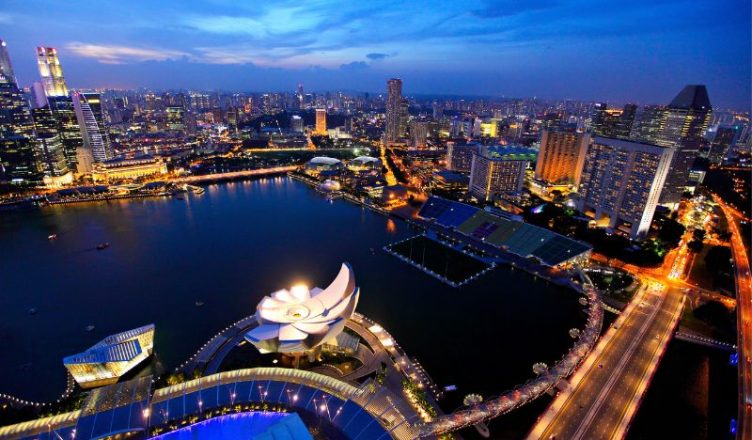Are you planning a trip to Singapore? Then, while you are busy planning a travel itinerary in Singapore, looking into hotel accommodations, preparing for the Singapore tourist visa application process, and booking flights, don’t forget about figuring out how to get around once you’ve arrived. Singapore’s public transport system is not only efficient and extensive but also environmentally friendly.
Despite being a small but extremely modern country with a land area of only 730 square kilometers, Singapore is one of the world’s tiniest countries, so its public transportation system and infrastructure are extensive, efficient, well- maintained, and regular. It has a spectacular transportation infrastructure network that provides convenient and affordable public transportation for getting around the city-state country. Public transport is readily available in Singapore, so getting around can be easy without having to rely on private transportation on your travel holiday. Use this guide to learn everything you need to know about using the bus, train, and other modes of public transport in Singapore.
Modes of Public Transport in Singapore
Bus Transport in Singapore
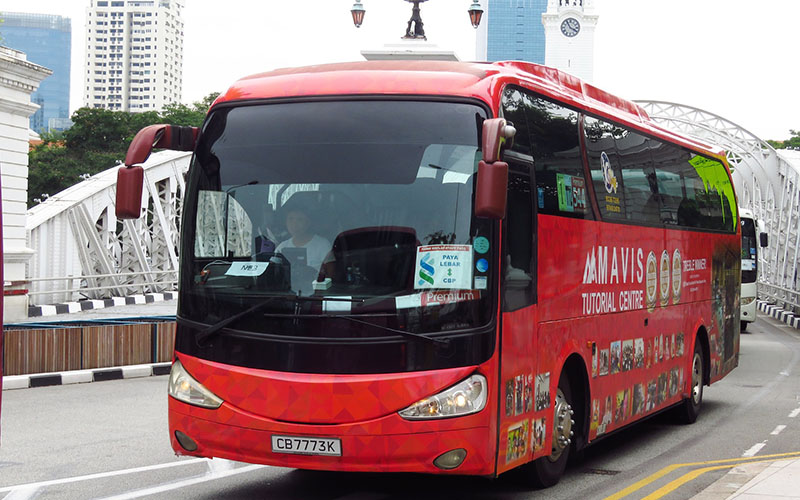
The extensive bus service in Singapore is clean and efficient, reaching nearly every corner of the island and even running to and from regions in Malaysia. Almost all public transportation buses and bus stations are wheelchair accessible and are equipped with facilities to assist visually impaired commuters. SBS Transit and SMRT are the two main public bus operators in Singapore. On Fridays, Saturdays, and the eve of public holidays, SMRT operates late-night bus services between the city and various suburbs from 11.30 p.m. to 4.35 a.m. Go-Ahead Singapore and Tower Transit Singapore are two other operators that provide efficient bus services in Singapore. After midnight, you can look for the extended night transport service: Nite Owl from SBS and NightRider from SMRT, covering abbreviated routes throughout the country until 2 a.m. The distance traveled from one point to another determines the fare.
A standard bus trip of up to 4 kilometers costs around 99 cents on the card and 170 cents in cash. The charge then increases by about 10 cents every 1 kilometer. The bus services in Singapore accept EZ-Link cards. These are pre-paid cards that make cash payments far more convenient. If you want to pay in cash, you must provide the exact fare because there is no facility to offer change if you provide more than the exact fare.
You can even look for apps that can help you plan and plot your bus trip, such as CityMapper, MyTransport, and GoThere.sg-Help, to program your itinerary using public transportation methods depending on your point of origin and planned destination for your travel.
Mass Rapid Transport in Singapore
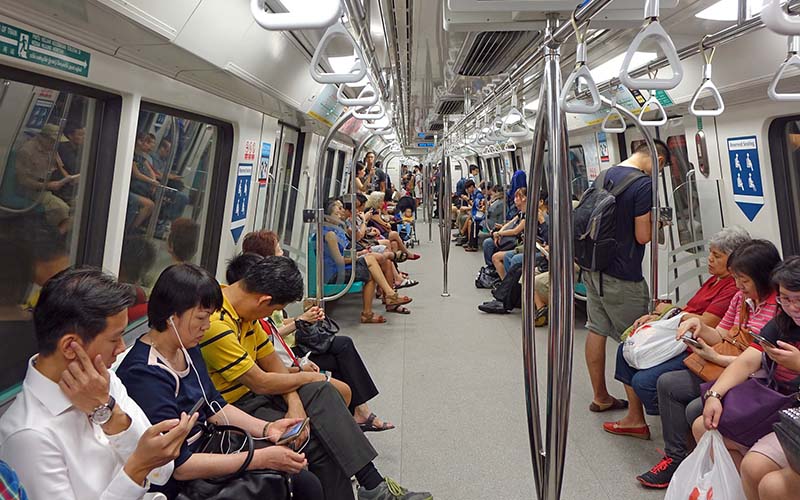
Singapore’s Mass Rapid Transit (MRT) metro system is the most convenient and fastest way to get around. The system has over 140 stations, six different lines, and trains that run every 3 to 5 minutes, seamlessly and punctually connecting the island-state nation. The trains run from 5.30 a.m. to midnight. The fare is roughly the same as standard bus charges, which are 99 cents for the first 4 kilometers and then 10 cents for each additional kilometer charged to the card.
The Mass Rapid Transport stations in Singapore are specially designed from the ground up for easy accessibility, with elevators, ramps, and barrier-free access. The stations also have wheelchair-accessible toilets and trains with wheelchair-accessible carriages. You can plan routes easily using the same apps as for the buses that let you input Point A and Point B and create a travel itinerary based on the points.
Singapore Taxi Services: Convenient City Transportation
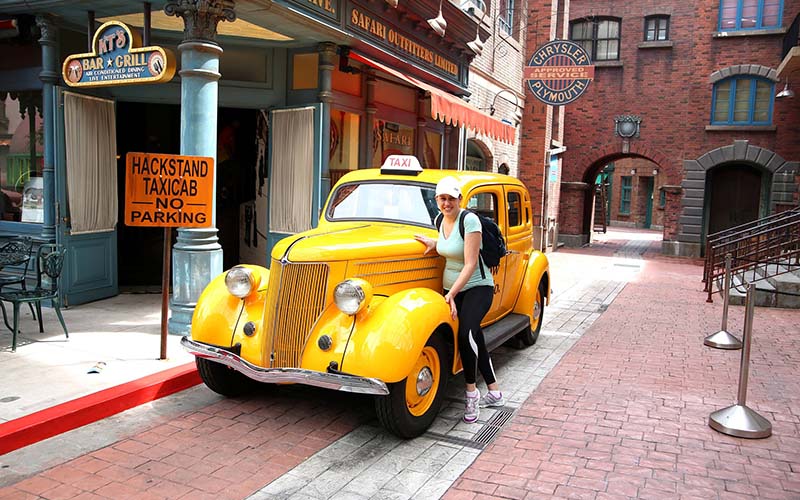
In addition, Singapore has a sizable taxi fleet that can be used for door-to-door transportation or to go places that buses and trains cannot reach. The majority of taxis are privately owned, but they are subject to the Land Transport Authority of Singapore, which regulates and supervises their services and fares. These taxis can be booked via phone or app, or simply by waving your hand in the air.
When hailing a taxi, keep in mind that taxis will not stop near bus station lanes or on specific roads such as Finlayson Green, High Street, Orchard Link, or Esplanade Drive. Look for a designated taxi stand to hail a cab or book one through an app. The fares are calculated based on the length of your journey. In Singapore, a standard taxi would charge a flag-down fare of about SGD 4 and then 25 cents for every 400 km covered up to 1 kilometer and then 25 cents for every 350 km. Peak times and late-night rides would be more expensive.
For travel after midnight, a surcharge of 50 percent of the metered fare applies for taxis until 6 a.m. If you are traveling from a specific location, a taxi surcharge may apply based on the number of taxi trips made in specific areas at specific times. Payments done through credit cards add an extra 10 percent administrative fee. Always keep in mind that if you pass under-ERP a gantry in your taxi, congestion penalties and ERP charges apply, and the rates may vary depending on the location.
Bicycle and Trishaw in Singapore

Singapore is a small island country where one can explore the nearby districts by bicycle. Though the roads can be quite congested, Singapore has built a network of 525 kilometers of cycling paths and infrastructure to allow locals and visitors to enjoy the destination at their own pace. You can also rent foldable bicycles that can be easily transported in public buses!
Singapore’s three-wheeled bicycle taxis or trishaws, which were once popular modes of transportation, are no longer widely available. However, Trishaw Uncle – Singapore’s only licensed trishaw tour operator – offers rides through charming neighborhoods with novelty rides. Both of these modes of transportation are ideal for taking in the scenic views of Singapore at your own pace.
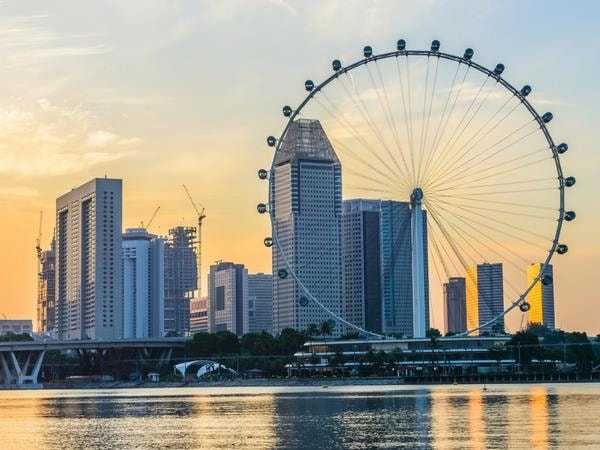 Featured
Featured
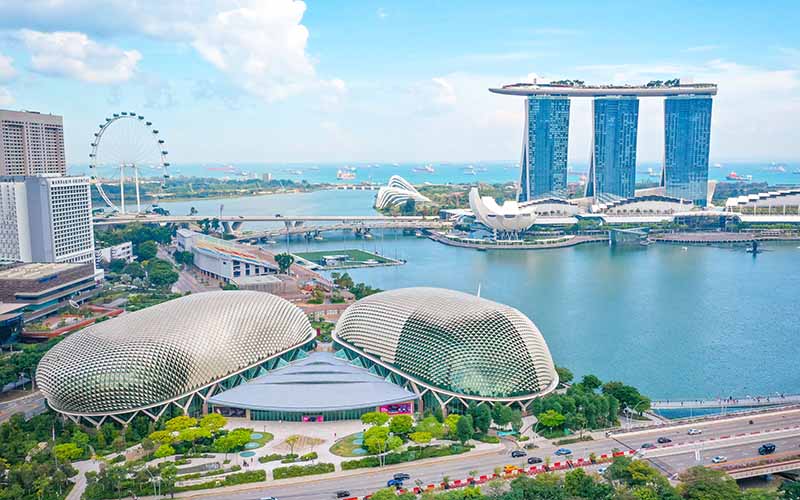 Featured
Featured
 Featured
Featured
Cable Car Adventures in Singapore
Last but not least, Cable Cars are yet another mode of Singapore’s public transport, taking you soaring high in the sky while swinging between Mount Faber and the gorgeous island of Sentosa. The Cable Cars are operated by Cable Car Sky Network, proving a fun and adventurous way of exploring and engulfing the surreal sight of Singapore’s skyline. The cable is 5 kilometers long and carries around 100 cabins every day.
The cabins are well-kept and maintained, and they are regularly checked for safety measures. The first trip starts at 8:45 a.m., and the last trip is around 9:30 p.m. The line’s last ticket is sold at 9:15 p.m. The fares vary according to the location.
Mount Faber line: Adults $33, Child $22
Sentosa Line: Adults $15, Child $10
Both Lines: Adults $35, Child $25
EZ-Link Card
It is best to purchase a Singapore Tourist Pass, which allows you to load money onto an electronic card and use it for a set period of time on unlimited rides on Singapore’s public buses, MRT, and LRT trains. A one-day pass costs about SGD 20 per person and is valid for adults and children over a height of 0.9 meters. You will receive an SGD 10 refund if you return the card within five days of purchase after using it.
EZ-Link Pass can be used at various retail outlets and venues, including prominent fast-food outlets, a large number of hawker centers, cold storage facilities, cinemas, the Singapore Science Centre, and more. Download the EZ-Link apps so you can refill the card using your phone. The best place to purchase an EZ-Link pass is at 7-Eleven or Cheer outlets; however, you can also get one at the many MRT stations.
Insider’s Tip
Rush hour is always the enemy; the trains are packed to the gills, there are long bus queues, and taxis impose surcharges that can double the fare. Avoid planning to travel from 7 a.m. to 10 a.m. on public transport (if possible).
Buy a local SIM card for every aspect of your Singapore travel. There are apps to help you with every step of your trip, from leaving the international airport to hailing a cab and planning your entire trip on public transportation. You will get a generous data plan to work with the apps, download, and commute like a local.
Conclusion
This article will definitely be a helpful travel guide for your first-time visit to Singapore, especially if you want to figure out the public transportation system in the city.
Singapore is a favorite among travelers because it is a city that appreciates a good mix of modern and natural scenery. But it is also popular because it has a hassle-free and convenient public transportation network that is punctual, clean, and unquestionably one of the most professional and safe transportation systems in Asia. First-time commuters can easily access and get around without having to worry about their travel itinerary, and if you are wondering how to apply for a Singapore visit visa online, check for the latest updates on singaporevisa.ae
The public transportation in Singapore is also quite affordable and frequent which makes it a favorite for budget-conscious travelers to Singapore. Those who do not want to break the bank by hiring a private car or a tourist bus can enjoy Singapore freely at low costs and first-rate facilities thanks to the city-wide public transportation system. Give public transportation a try the next time you are in Singapore; you will be glad you did!
FAQ’s
1. Is Singapore’s public transport system efficient?
Singapore has a highly efficient public transport system, with ample bus services, a well-connected Mass Rapid Transit (MRT) system, and a regulated taxi fleet. They all ensure convenient and reliable options for commuters.
2. How does the Mass Rapid Transit (MRT) system operate in Singapore?
Singapore’s MRT system boasts over 140 stations with six lines. Starting at 5:30 a.m. and working until midnight, trains operate every 3 to 5 minutes, promising a fast and punctual mode of transportation across the island.
3. How are taxi services regulated in Singapore?
Taxi services in Singapore are regulated by the Land Transport Authority. Fares are calculated based on distance, with a flag-down fare of SGD 4 and additional charges for distance covered. Peak hours and late-night rides may incur extra charges.
4. What is the Cable Car Sky Network, and where does it operate?
The Cable Car Sky Network operates between Mount Faber and Sentosa, offering a scenic and adventurous experience. It stretches for about five kilometers and functions from 8:45 a.m. to 9:30 p.m. on a daily basis. It allows visitors to admire breathtaking views of Singapore’s skyline from a distinct perspective at varying fares.
5. What is an EZ-Link Card, and how can it be used in Singapore?
The EZ-Link Card is a prepaid card used for public transport in Singapore. It can be loaded with money and offers convenient, cashless payments on buses, MRT, and LRT trains. Available at various outlets, it enhances the ease of commuting.
6. What is the refund policy for the EZ-Link Pass?
The EZ-Link Pass, such as the Singapore Tourist Pass, provides a refund of SGD 10 if returned within five days of purchase. This encourages users to return the card after use, promoting sustainability and recycling.
7. Why is buying a local SIM card recommended for travelers in Singapore?
Purchasing a local SIM card in Singapore is recommended for travelers as it provides a cost-effective solution for data needs. It ensures seamless use of travel apps, navigation, and communication throughout the trip.
